by Daniel | Last Updated March 11th, 2023
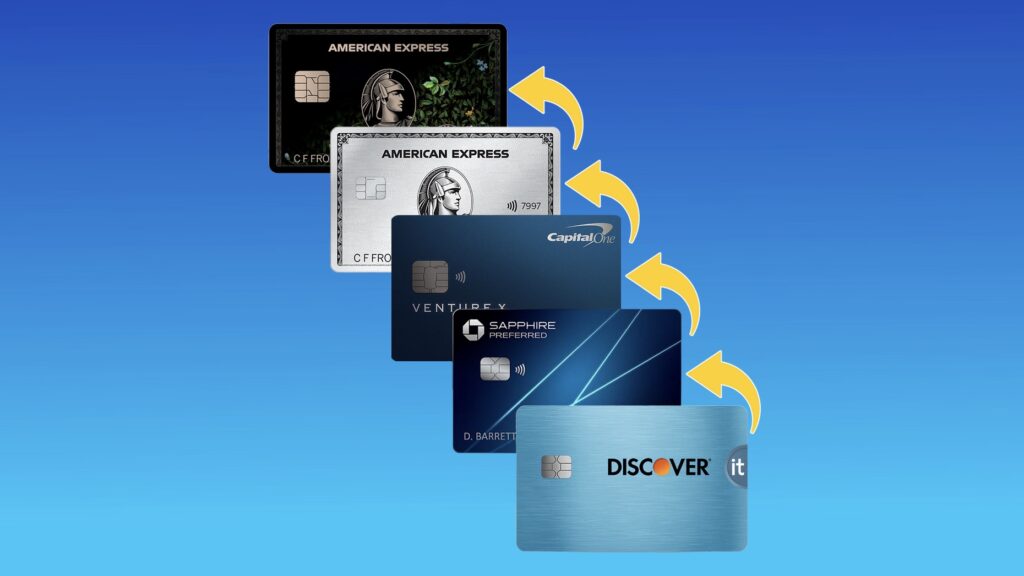
We may earn a commission for purchases using our links, at no cost to you.
So how can you go from using entry-level credit cards that generally don’t offer you much in the way of benefits or credit limits to using a Premium credit card that offers large sign-up bonuses, a ton of benefits and user perks, and a large credit limit?
Well, the easiest way to do this is by talking you through what the credit card ladder is, basically it is made up of 5 different tier levels starting from credit builder cards all the way up to Invite only credit cards.
So in this article, I’ll talk you through exactly how you can work your way up the credit card ladder and potentially earn $100 if not $1,000’s of dollars in value each year of card ownership.
Level 1 – Starter Tier
So starting at level one or the starter tier you are looking at secured credit cards and student credit cards.
These cards are generally designed for people who don’t have any credit history and therefore don’t require you to have a credit score.
So pretty much anyone can apply for one of these cards and have a pretty good chance of getting approved.
And a good rule of thumb is to find a card that doesn’t have an annual fee, as there are plenty of good options at the base level that don’t charge an annual fee.
Student credit cards are targeted toward college students and generally have a very low credit limit, which is ok because the point of a student credit card is to show creditors that you can be responsible with your credit card and consistently pay off any amount of debt you owe, and by doing this you will start to build your credit score.

Now with a Secured credit card, you are going to be required to put down a security deposit, and this amount varies from card to card, it can be as little as $200 up to more than $5,000.
Basically whatever amount you put into the security deposit will be your credit limit.

And although it might seem pointless to only have a credit limit of $200, the main focus of this card is to basically prove to creditors that you can be responsible with your credit card by paying off any amount of debt owing and by keeping your credit utilization below 30%.
This will get you moving in the right direction and help to build your credit score so you can then apply for a more rewarding credit card.
So the question now is how do you actually use these cards correctly to move to the next level?
Well to put it simply you just need to make sure that you pay your statement credit due on time and in full consistently each and every month.
And this is something I have done for years with my credit cards and my credit score has remained over 800 as a result, so it defiantly works.
Another important aspect to also keep in mind is to try and keep your credit utilization ratio below 30%.
A simple example of this would be if you had a secured credit card with a credit limit of $300, if you had a balance of just $90 – you’re already using 30% of the total credit you have available.

And whilst this might seem somewhat restrictive, it’s just a way that lenders and creditors can gauge how you are actually managing your credit card, by keeping your credit utilization ratio below 30% basically signals to them that you are not at any risk of overspending.
Now in terms of how long you will need to be at the level can vary quite a bit.
For example, if you have continuously missed payments on previous credit cards and have a very low credit score, you are likely to spend more time building credit at this level compared to someone who has a clean slate.
But a reasonable time period would be approximately 1 year.
And I know that might seem like a lifetime, but it’s an extremely important part of learning how to best manage your credit card and build credit appropriately.
Now a couple of Secured credit cards worth considering would be the Discover It Secured Credit card or the Quicksilver Secured Credit card from Capitol One.
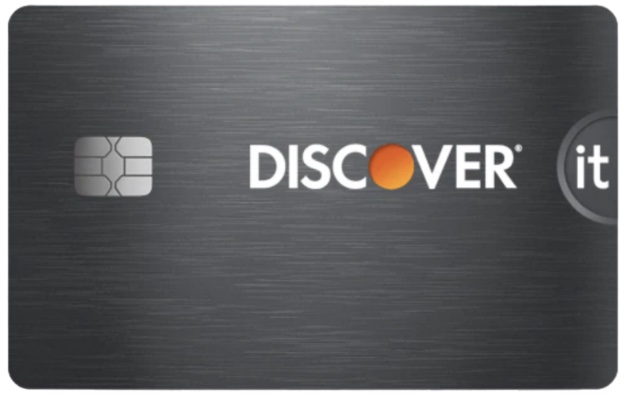
- No Annual Fee
- 2% Cash-back at Gas Stations and Restaurants up to $1k
- 1% Cash-back on everything else
- Cashback Match at the end of the year
- $200 minimum deposit
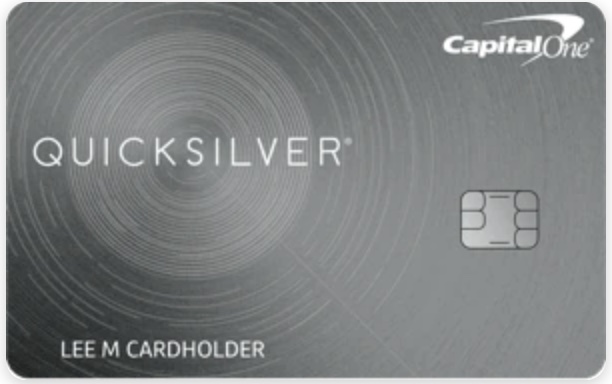
- No Annual Fee
- Unlimited 1.5% cash back on all purchases
- $200 minimum deposit
Both of these cards have no annual fee and have a minimum refundable security deposit of just $200.
And best of all they both offer cash-back incentives just by using the cards.
Now a couple of worthwhile Student credit cards worth considering are the Chase Freedom Student credit card and the Discover it Student Cash Back credit card.
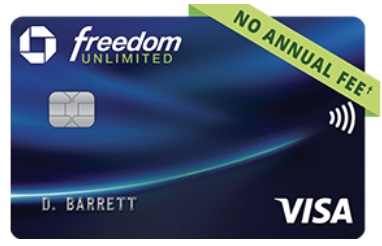
- No Annual Fee
- $50 Bonus Offer
- 1% cash back on all purchases
- $20 Good Standing Rewards

- No Annual Fee
- 5% cash back at select locations each quarter
- Cashback Match
And just like the previous two cards we looked at there are no annual fees and there is the ability to earn cash back on purchases.
Level 2 – Beginner Tier
So now let’s move on to level 2 which is the beginner tier, and there are plenty of credit cards that fall into this category some of which include the Chase Freedom Flex Credit Card, Amex Blue Cash Everyday Card, or the Citi Custom Cash Card.
And to be accepted for one of these cards you will need to have a credit score of at least 670 or higher.
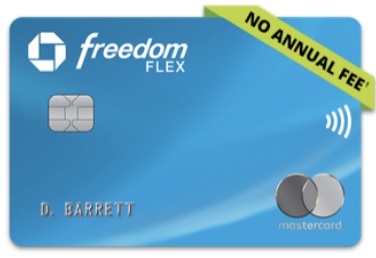
- No Annual Fee
- $200 bonus after spending $500 in 2 months
- 5% cash back at grocery stores up to $12,000
- 5% cash back at select categories each quarterly

- No Annual Fee
- $200 back in the form of a statement credit after spending $2,000 in 6 months
- 3% cash-back on Groceries, Gas, and Online Retail Purchases
- $180 Home Chef Credit

- No Annual Fee
- $200 Cash Back after spending $1,500 in 6 months
- Up to 5% cash back on your highest eligible spend category
- Cashback Match
Now just like the previous cards I talked about, none of these cards has an annual fee which is great.
But you will now notice that they all offer a lot more value.
All of the cards have a $200 cash-back bonus then both the Citi and Chase card offers up to 5% cash back, whereas the Amex card offers up to 3% cash-back.

Also, all of these cards have the capacity to offer you a larger credit limit if you meet their requirements, this can range from around a minimum of $500 all the way up to $20,000 (but remember, you will need to meet pretty strict requirements to get a $20,000 credit limit with one of these cards).
Now just as I mentioned earlier with the level one or base tier credit cards you will still want to do pretty much exactly the same thing in terms of management, which is always pay off any amount owing on your card in full and on time consistently, and of course, keep your credit utilization ratio below 30%, which should be a bit easier now as I would expect you too have a higher credit limit with one of these credit cards.
So in terms of how long you will need to be at this level before you can move up to a level 3 or mid-tier credit card may vary a bit but generally speaking I would aim for approximately 1 year.
Now if you’re happy with a level 2 or beginner tier credit card and don’t feel like you need a more expensive or exclusive credit card, then it’s totally fine to just keep the card you have and take advantage of the benefits that it offers.
Seeing that they have no annual fee and still offer some reasonable benefits makes them get credit cards for a lot of people who don’t need or want a high-tier high-cost credit card.
Level 3 – Mid-tier
Now moving on to level 3 or mid-tier credit cards you will start to see larger sign-up bonuses and quite a lot more benefits and user perks.
Along with this, there will also be an annual fee associated with these cards, but it’s usually relatively easy to justify the cost of the annual fee as all of the cards I’ll show you come with benefits that easily cover the cost of the actual annual fee.
And to be accepted for one of these cards you will generally need to have a credit score of at least 700 or higher.
Now with these tier 3 cards, you will notice that a lot of them will start to offer you points as opposed to cash back, and this is a good thing, as these points can then be redeemed for a wide variety of different benefits, most commonly travel.
And if redeemed correctly, these points can be quite valuable and end up rewarding you with free hotel stays and flights.

Now don’t worry if you’re not interested in traveling, as points with all of these cards can be used for a ton of other benefits.
So two cards in this category that I specifically like are the Chase Sapphire Preferred card which costs $95 each year, and then the Amex Gold card which costs $250 on an annual basis.
And one reason I like these two cards is that they offer flexible points, which means that you can use these points on a wide variety of different benefits such as hotel stays or flights.
Now there are other credit cards that fall into this category that don’t offer flexible points earnings such as the Hilton Honors American Express Surpass Card or the World of Hyatt Credit Card from Chase, and these cards are fine if you know you will be able to take advantage of the points at either Hilton hotels or Hyatt Hotels, but in my opinion, the Chase Sapphire Preferred card and the Amex Gold card are more user friendly as they do offer you more flexibility with how you can use your points.

So with the Chase Sapphire Preferred card, it is possible to earn 60,000 bonus points as a sign-up bonus after spending $4,000 on purchases within the first 3 months of card ownership.
These points are worth up to $750 if redeemed through Chase Ultimate Rewards, which is almost 8 times the value of the annual fee.
Now alternatively it is possible to transfer these points at a 1 to 1 value to 11 different Airline Travel Partners or 3 different Hotel Travel Partners.
Along with this, there is $50 in statement credits each account anniversary year for hotel bookings made through Chase Ultimate Rewards.
In terms of earning points, it is possible to earn 5x points on travel purchased through Chase Ultimate Rewards, 3x points on dining, grocery store purchases, and select streaming purchases.
Then 2 x points on regular travel purchases, then all other purchases earn 1 point per dollar spent.
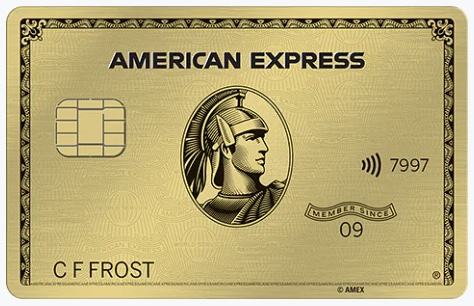
With the Amex Gold card, it is currently possible to earn 60,000 membership rewards points after spending $4,000 on purchases within the first 6 months of card ownership.
These points are worth around $600 if redeemed for travel through amextravel.com, but they can be worth even more if transferred to one of the many travel partners.
Now to help justify the $250 annual fee there is a $120 Dining Credit and then $120 in Uber Cash that can be used to either Dine or Ride with Uber.
In terms of earning membership rewards points it is possible to earn 4x points at restaurants worldwide and on groceries up to $25,000 each year
Flight purchases will earn you 3x points and then everything else will earn you 1 point per dollar spent.
So in terms of how long you will need to be at Level 3 – Mid-tier (or intermediate) before moving up to the next level, I would say around 6 months, but it can be quite a bit quicker if you are desperate to get to the next level.
Level 4 Premium Tier
Now moving on to Level 4 or premium tier credit cards you are going to start seeing that these cards offer quite a lot more benefits and perks than all of the previously mentioned cards.
Things like airport lounge access, higher levels of insurance coverage, and premium status with different hotels and airlines.
And the credit score needed for these cards is at least 720 or higher, basically, you will need an excellent credit score.
So along with all of these extra benefits, you will notice that the annual fees are substantially higher.
And two cards that I specifically like and have at this level are the American Express Platinum card which has an annual fee of $695 and then the Chase Sapphire Reserve card which has an annual fee of $550.
Both of these come with a whole range of valuable benefits that can easily offset the cost of the annual fee.
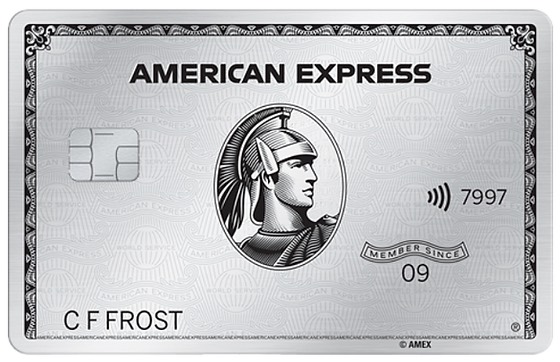
- Annual fee – $695
- Sign-up Bonus – up to 150,000 Membership Reward Points
- 5x points – Flights & Hotels
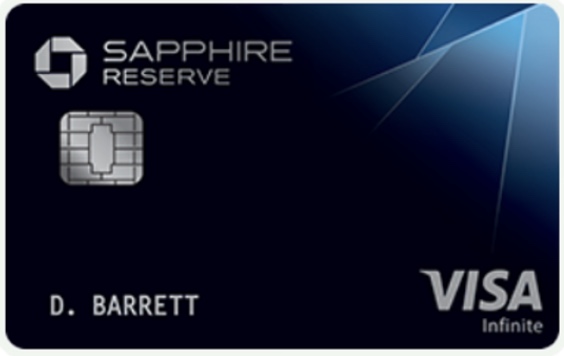
- Annual fee – $550
- Sign-up Bonus – 60,000 points (worth $900)
- 10x points – Hotels, Dining & Car rentals through Chase Ultimate Rewards
- 5x points – Flights
- 3x points – Travel & Dining
One other card that is definitely worth considering is the Capital One Venture X credit card which has an annual fee of $395.
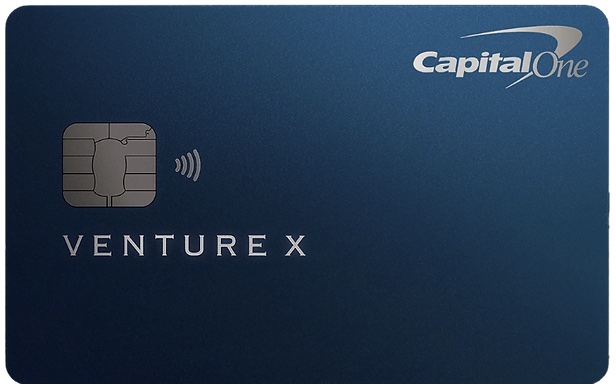
- Annual fee $395
- Sign-up Bonus – 75,000 Miles (worth $750)
- 10x miles – Hotels & Car rentals through Capital One Travel
- 5x miles – Flights booked through Capital One Travel
This card actually provides you a $300 annual travel credit and 10,000 bonus miles each year, which just happens to be worth $100, so technically you get paid $5 each year just to have the card, and this doesn’t include the sign-up bonus or other benefits that come with this card.
And if you want to learn more about these 3 cards, check out my in-depth review and comparison of them here.
Now in terms of how long you will need to be at this tier before leveling up really depends on a couple of things, first of all, you will need to be making quite a lot of money and then you will also need to be spending a lot on your credit card.
Level 5 – Invite Only Cards – Elite Tier
So finally we have reached the top of the ladder to Level 5 or the Ultra Premium tier.
And these cards are invite only which means that they can be quite difficult to acquire.
Two cards that fall into this category are the Amex Centurion card and the JP Morgan Reserve card.
Now if you are lucky enough to be invited to apply for one of these cards you are going to need a lot of money and spend a lot of money to meet the requirements of each card.
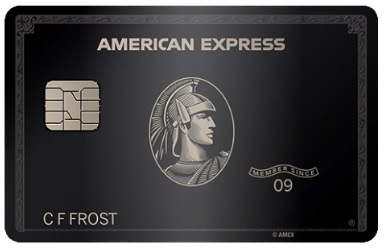
First of all, with the Centurion card it is rumored that you will need to spend in excess of $250,000 each year on your current Amex cards just to be considered for the black card.
And then if and when you are invited to apply there is a pretty steep annual fee of $5,000, and that’s not all!
New cardholders will also be required to pay an initiation fee of $10,000!
So it’s going to cost you $15,000 just to get the card, which is pretty insane.
And although it is generally considered invite-only, it is possible to apply for a card here:

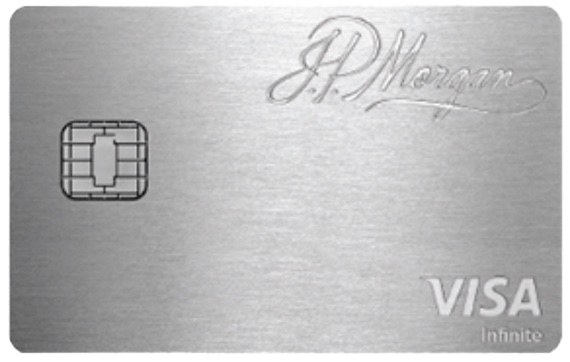
Then with the J.P. Morgan Reserve card, the annual fee is much more reasonable coming in at $595 each year.
But that’s not the difficult part of acquiring this card.
It is rumored that you will need to have approximately $10 million in liquid cash or managed assets with Chase Bank before they will consider sending you an invite.
Now both of these cards come with some pretty fantastic benefits and if you’d like to learn more about both cards check out my full in-depth review here where I go over everything there is to know about each card.
And I must say that it would be really nice to have either one of these cards, but they are not necessarily the best credit cards out there, they are almost more of a way to flex, or show off the fact that you either make a lot of money or spend a lot of money.
So as you can see it is possible to climb the so-called credit card ladder if you can prove that you are responsible with money and have a reasonable income.
Now that’s not always so easy to do as there is some conflicting information out there about how to actually increase your credit score, which is a major part of actually climbing the credit card ladder, so make sure to check out this article here where I’ll show how to increase your credit score to over 800 in the quickest and easiest way possible.
